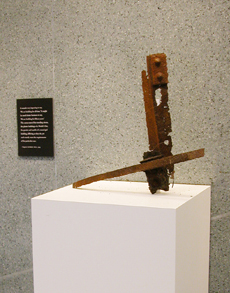| |
| |
|
|
|
|
|
|
|
|
|
|
|
|
|
|
| “It
sounds very imposing to say, 'We are building for all time.' It might be much
better business to say, 'We are building for fifteen years.' The canvas tent of
the traveling circus, the plaster buildings of a World's Fair, the granite and
marble of a municipal building, differing as they do, yet each exactly meet the
requirements of the particular case.” Engineer George Hill, 1904 |  Steel angle and strap, Battery Maritime Building, N.Y., 1909 Courtesy Richard Pieper, Jan Hird Pokorny Associates Chicken&Egg Public Projects | Life
span is an engineered product. All structures have an expiration date. The masonry skyscrapers that gave New York its identity were not built to last. Their economic life—how long they would generate profits—was the prime concern of owners who bought and sold them. Physical life—how long the buildings would last—was secondary. The two faces of permanence reveal themselves in old high-rise building façades. Internal steel anchors lie close to the surface. Water penetrates through the thousands of mortar joints. The resulting rust expands up to ten times the volume of the original steel and destroys and displaces the masonry. These buildings were built for sale, not durability. How long should urban infrastructure last? Its life depends on the people who design, own, manage, and use it. |
Privacy Policy | Rules and Regulations | Using the Internet | Website Terms and Conditions | © The New York Public Library
|